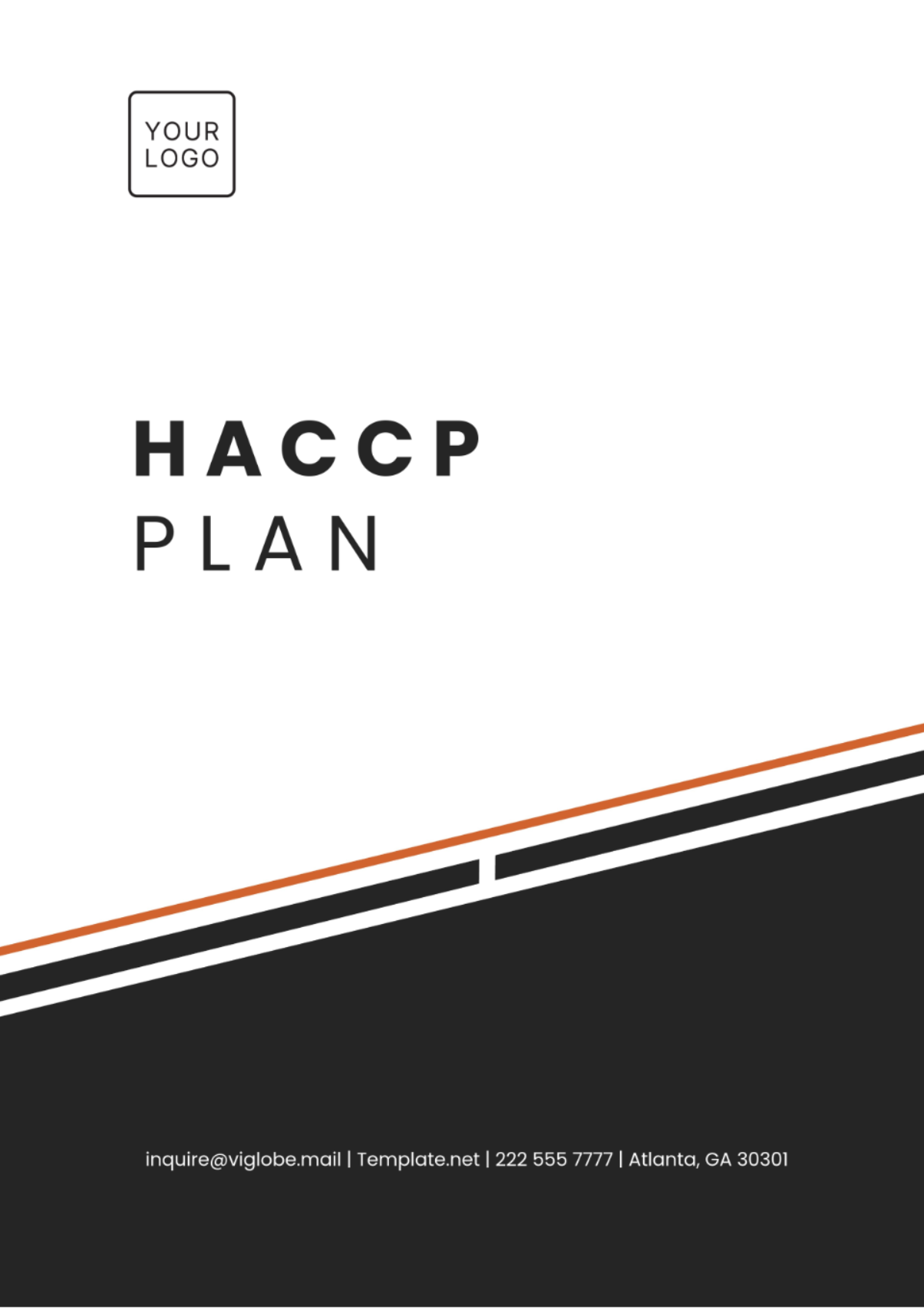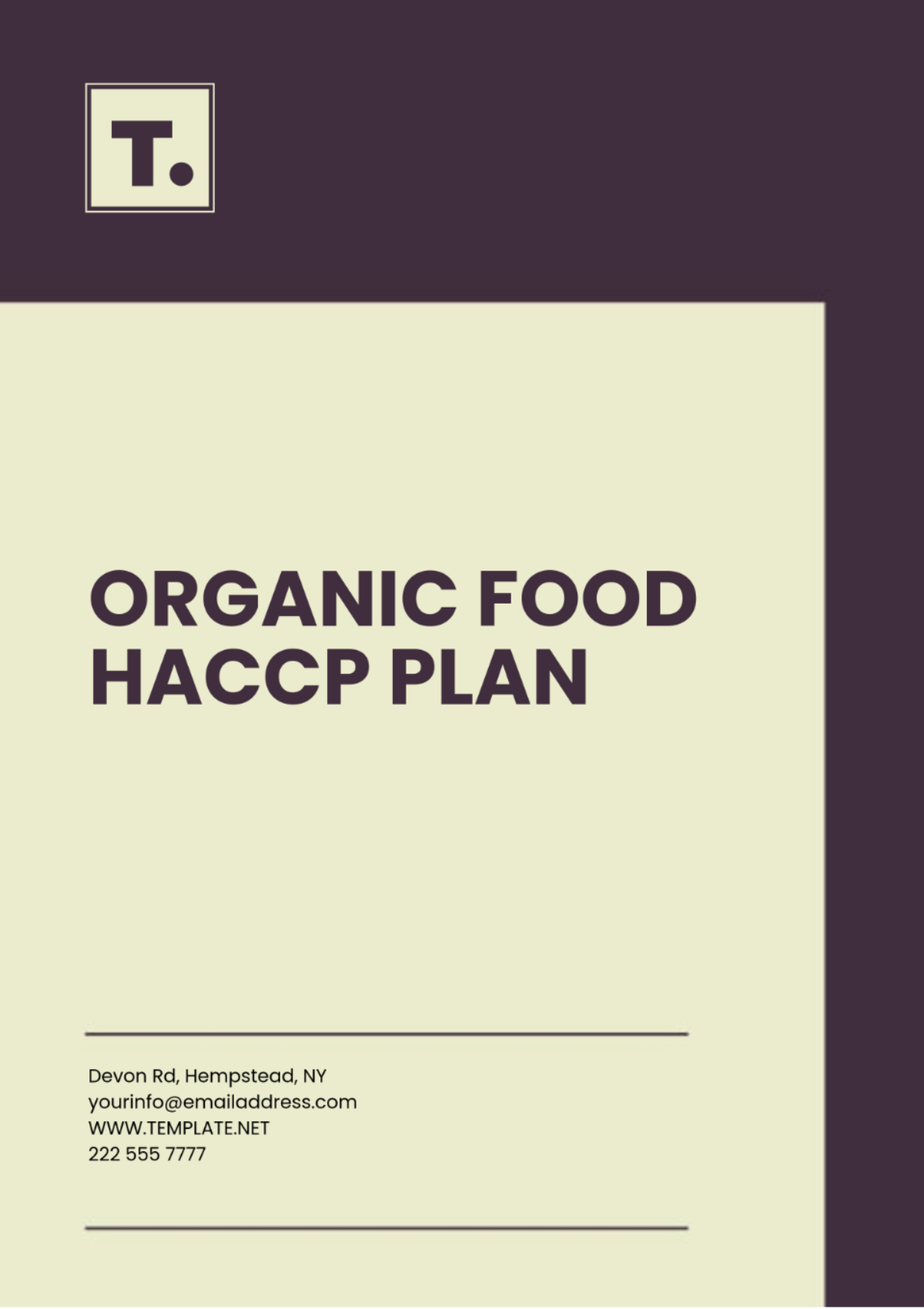Printable Verification HACCP Plan
Date: May 1, 2060
Prepared by: [YOUR NAME]
I. Introduction and Purpose
The purpose of this plan, known as the Hazard Analysis and Critical Control Points (HACCP) plan, is to meticulously identify, thoroughly evaluate, and effectively control any potential hazards related to food safety. The primary goal of this comprehensive plan is to guarantee the safety of food products by systematically preventing, significantly reducing, or eliminating any potential risks that may arise throughout the entirety of the production process.
II. Scope
This Hazard Analysis and Critical Control Points (HACCP) plan encompasses all stages of the production process, with a particular emphasis on the various aspects of food product handling, preparation, and storage. This plan is applicable to the entirety of the products that are manufactured within our facility, ensuring that they adhere to established food safety regulations and standards.
III. Team Composition
The success of this HACCP plan relies on a dedicated team:
Project Manager: Oversees the HACCP implementation.
Food Safety Specialist: Identifies hazards and develops control measures.
Production Supervisor: Ensures adherence to the plan during operations.
Quality Assurance Officer: Monitors CCPs and verifies compliance.
Engineering Support: Maintains equipment to support food safety.
IV. Hazard Analysis
Step | Potential Hazard | Source |
|---|---|---|
Receiving | Biological contamination | Raw materials |
Processing | Chemical contamination | Cleaning agents |
Storage | Physical contamination | Environmental factors |
V. Critical Control Points (CCPs)
CCP | Control Measure |
|---|---|
Cooking | Maintain internal temperature |
Cooling | Monitor cooling times |
Packaging | Ensure seal integrity |
VI. Monitoring Procedures
Effective monitoring is vital to ensure that all CCPs remain within established safety limits. The following monitoring procedures will be implemented:
Temperature Checks: Conduct hourly temperature checks using calibrated thermometers during the cooking and cooling phases. Record temperatures in a log for traceability.
Cooling Monitoring: Document cooling times and temperatures at specified intervals, ensuring compliance with cooling protocols.
Packaging Inspections: Perform daily visual inspections of the packaging process and machinery to verify the integrity and safety of sealed packages.
VII. Corrective Actions
Prompt corrective actions are essential when deviations from established limits are identified. The following procedures will be followed:
Isolation of Affected Products: Identify and quarantine any products that are found to be non-compliant to prevent further distribution and consumption.
Investigation of Deviations: Conduct a thorough investigation to determine the root cause of the deviation, involving relevant team members as necessary.
Implementation of Corrective Measures: Implement corrective actions tailored to address the specific issue, which may include retraining staff, revising procedures, or enhancing equipment maintenance.
Documentation of Actions: Maintain detailed records of all corrective actions taken, including the nature of the deviation, investigation findings, and measures implemented.
VIII. Verification Procedures
Verification activities are critical to ensuring the ongoing effectiveness of the HACCP system. The following verification procedures will be implemented:
Weekly Record Review: Conduct weekly reviews of monitoring records and CCP data to ensure compliance and identify trends that may require action.
Quarterly Internal Audits: Perform quarterly internal audits to assess compliance with the HACCP plan, identify areas for improvement, and ensure that all procedures are being followed correctly.
Microbiological Testing: Submit product samples for external microbiological testing semi-annually to verify the effectiveness of food safety measures and ensure that products meet safety standards.
IX. Documentation and Record Keeping
Comprehensive documentation is essential for maintaining compliance and ensuring transparency. Key practices include:
Record Maintenance: Keep thorough records of CCP monitoring, test results, corrective actions taken, and any other relevant documentation.
Secure Storage: Store all records securely for a minimum of one year, ensuring easy access for audits and inspections.
Regular Updates: Regularly review and update documentation practices to ensure accuracy and compliance with changing regulations.
X. Review and Updates
Regular reviews and updates of the HACCP plan are essential for its continued effectiveness. The following practices will be implemented:
Annual Comprehensive Review: Conduct a comprehensive review of the entire HACCP plan annually with the HACCP team, ensuring it remains relevant to current operations and regulatory requirements.
Ongoing Updates: Update the HACCP plan to reflect any changes in production processes, equipment, or product lines. Document all changes and communicate them effectively to all relevant stakeholders.
Stakeholder Communication: Ensure that all stakeholders, including team members and upper management, are informed of updates and trained on any changes to procedures.





























